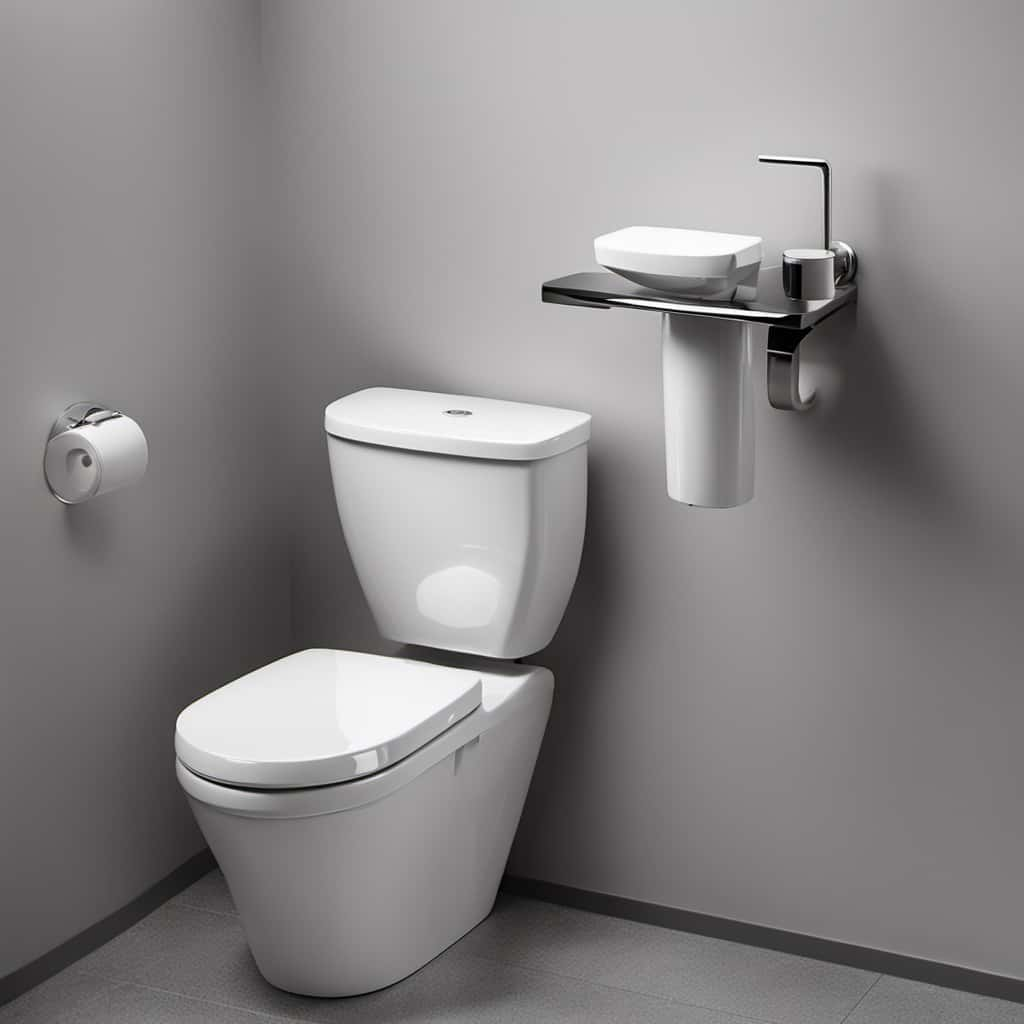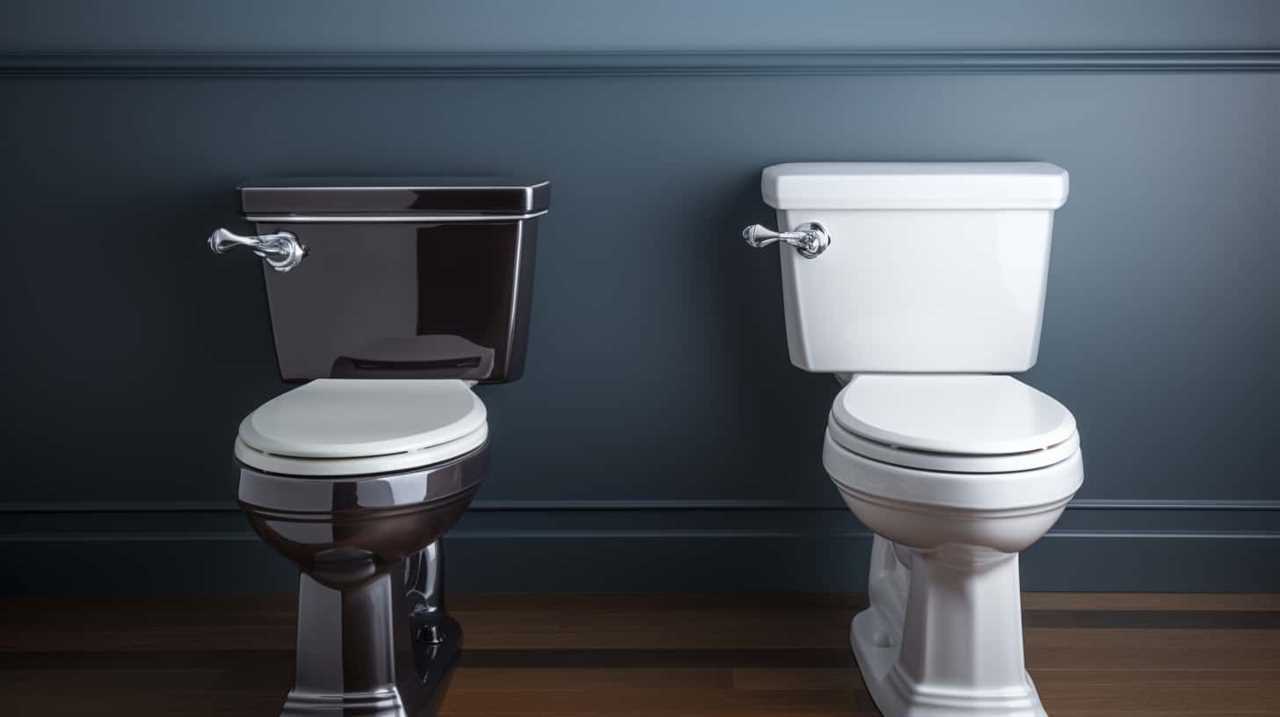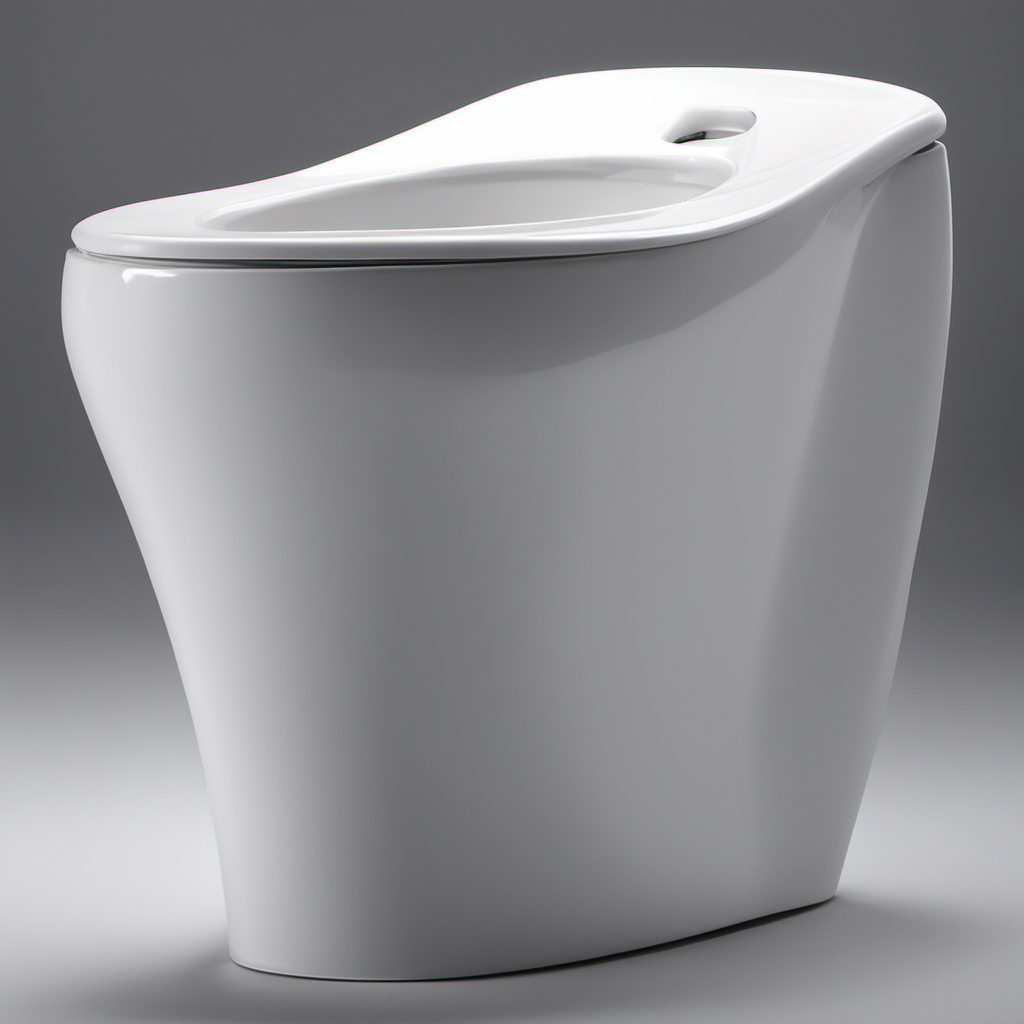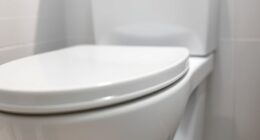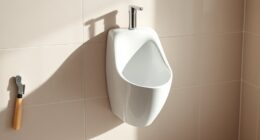As I position myself before the toilet, pondering the precise destination of the waste, it leads me to question: what is the final repository for the contents of the toilet drain?
In this article, we will delve into the intricate anatomy of a toilet system and explore the journey our waste takes from the bowl to the sewage treatment plant.
Join me as we unravel the scientific processes and environmental impact of toilet waste disposal, shedding light on this essential yet often overlooked aspect of our daily lives.
Key Takeaways
- The toilet system consists of various components such as plumbing system, toilet bowl, trap, pipes, and vent stack, which work together to transport waste away from the toilet and prevent leaks and odors.
- Water flow and mechanisms during the flushing process, including gravity, siphoning, and the trapway, play a crucial role in effective waste disposal.
- The waste disposal process involves gravity causing water to flow from the tank into the bowl, followed by the siphoning effect that pulls waste and water down the drainpipe into the sewage system.
- Treated water can be disposed of through various methods such as land disposal and discharge into water bodies, with careful monitoring necessary to meet regulatory standards and prevent harm to aquatic ecosystems.
The Anatomy of a Toilet System
The toilet system consists of several essential components that work together to efficiently remove waste from the bathroom. One of the key aspects of toilet design is the plumbing system. This intricate network of pipes and valves ensures that waste is transported away from the toilet and into the sewage system.
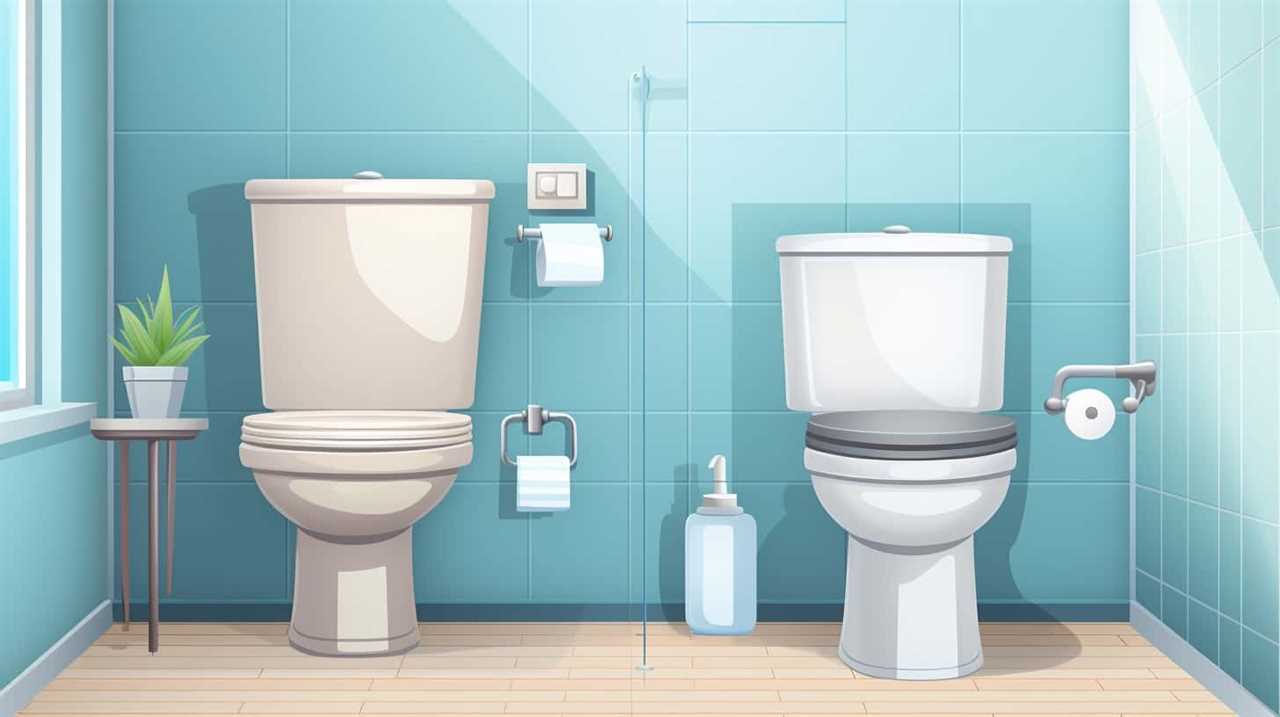
At the heart of the plumbing system is the toilet bowl. It’s designed to efficiently collect waste and provide a seal to prevent any leaks or odors. The bowl is connected to a curved pipe called the trap, which holds a small amount of water to prevent gases from entering the bathroom.
From the trap, the waste is then transported through a series of pipes. These pipes are typically made of PVC or cast iron and are designed to withstand the corrosive nature of waste materials. They’re also sloped to allow for gravity to assist in the flow of waste.
In addition to the pipes, the plumbing system also includes a vent stack. This vertical pipe allows for the release of trapped gases and helps maintain proper pressure within the system.
The Flushing Process: What Happens When You Flush
When you flush a toilet, water flows from the tank into the bowl through a mechanism called the flush valve. This sudden rush of water creates a strong force that propels waste and debris down the drain pipe and into the sewer system.
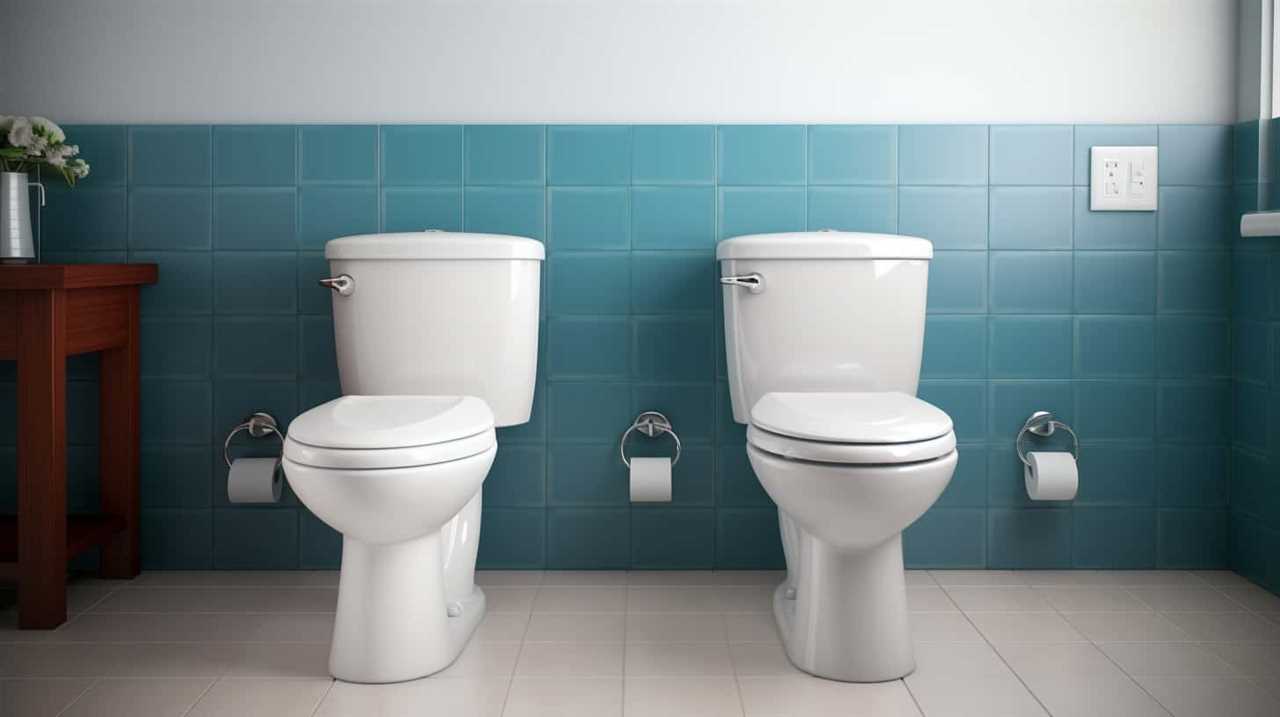
As the water and waste travel through the pipes, gravity plays a crucial role in the disposal process, allowing everything to flow downward and out of your home.
Water Flow and Mechanisms
Every time I flush the toilet, water swiftly rushes down the drain. This is due to the complex water flow and mechanisms that are involved in the flushing process. Understanding how water flows during a flush is essential for ensuring proper water treatment and sewage disposal.
Here are three key aspects of the water flow and mechanisms during the flushing process:
- Gravity: When you push the flush button or handle, gravity comes into play, causing the water to flow from the toilet tank into the bowl.
- Siphoning: As the water enters the bowl, it creates a siphoning effect, pulling the waste and wastewater down into the drainpipe.
- Trapway: The trapway, a curved pipe at the base of the toilet, helps to maintain a water seal, preventing any foul odors from escaping back into the bathroom.
Understanding the water flow and mechanisms during the flushing process is crucial for ensuring effective waste disposal.
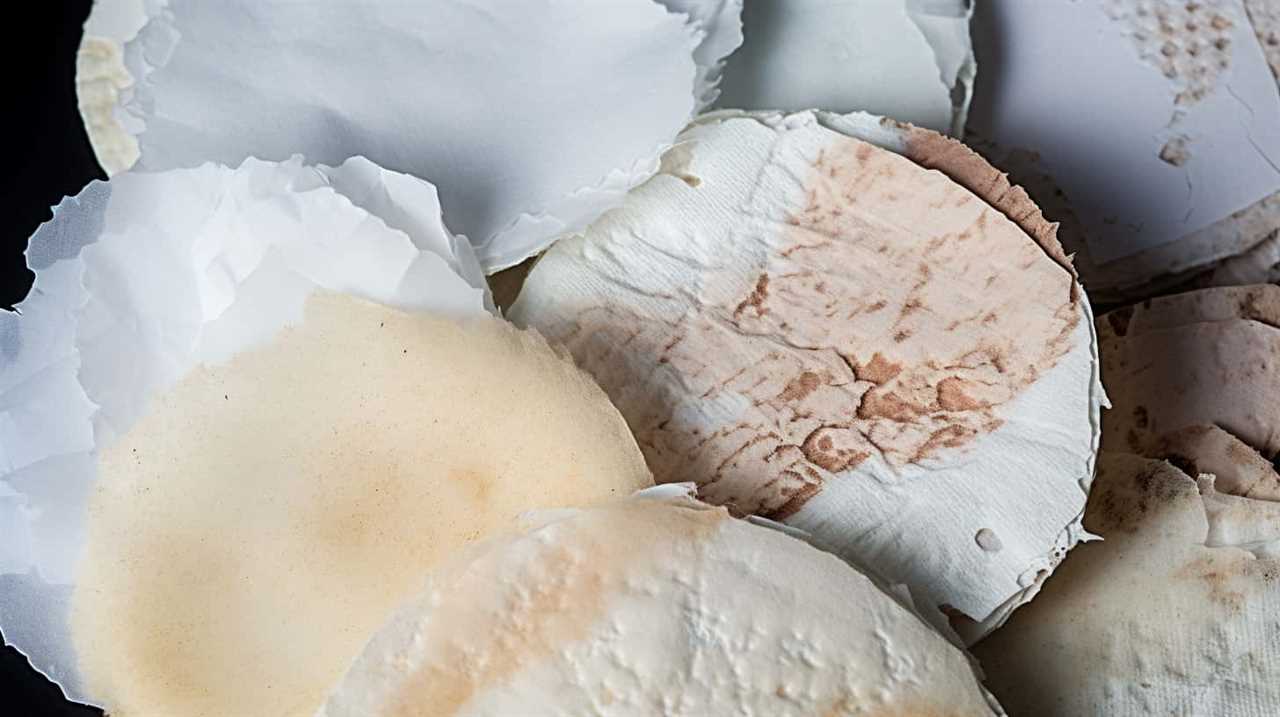
Now, let’s delve into the next section: the waste disposal process.
Waste Disposal Process
As I push the flush button or handle, gravity comes into play, causing the water to flow from the toilet tank into the bowl, initiating the waste disposal process. Once the water enters the bowl, it creates a siphoning effect, pulling the waste and water down through the trapway and into the sewage system.
This simple yet effective mechanism relies on the force of gravity to transport the waste to its next destination. Waste management techniques and sewage treatment technologies play a crucial role in ensuring that the waste is properly treated and disposed of. These technologies involve various processes such as screening, sedimentation, biological treatment, and disinfection, which remove harmful contaminants and pathogens from the wastewater.
Now, let’s explore the next step in the waste disposal process: from toilet bowl to sewer pipes.
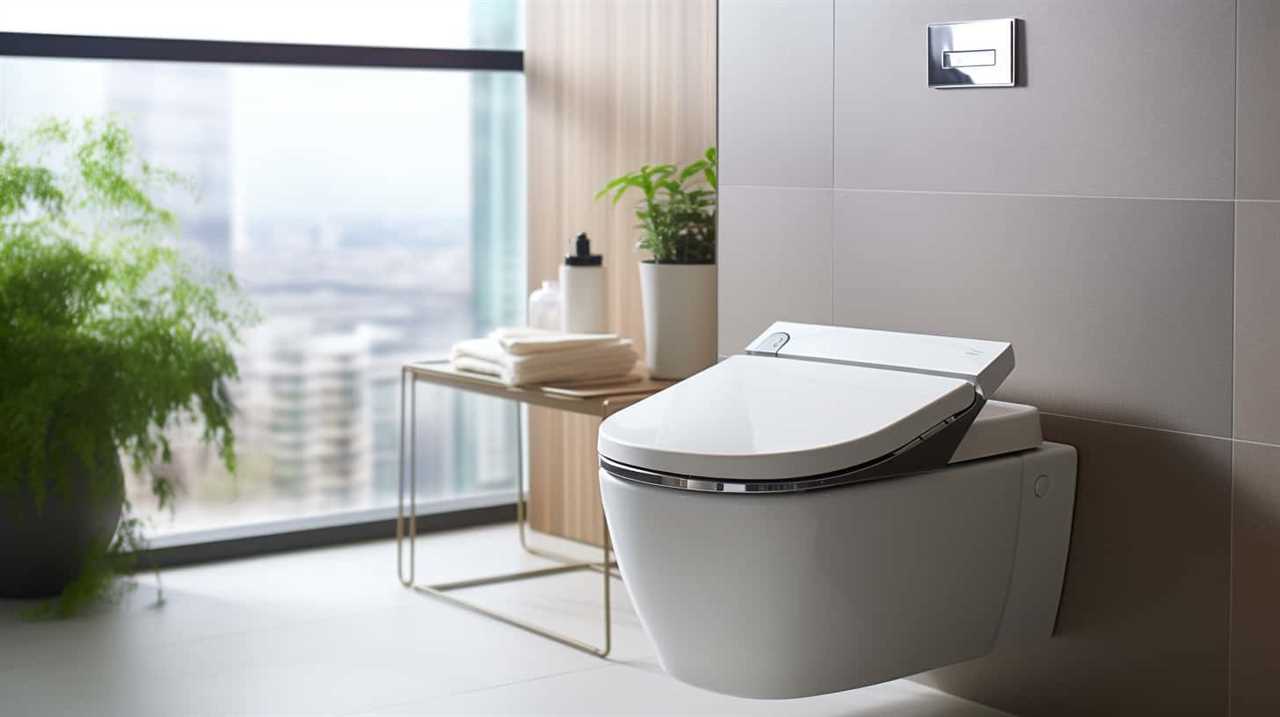
From Toilet Bowl to Sewer Pipes: The First Stop
After flushing, the toilet drains its contents into the sewer pipes through a series of interconnected channels. This process is crucial for proper waste disposal and requires regular maintenance to prevent blockages.
Here are three key points to consider when it comes to toilet drain maintenance and blockage prevention:
- Proper usage: To prevent blockages, it’s essential to use the toilet correctly. Avoid flushing anything other than toilet paper and human waste. Flushing items like wipes, sanitary products, or excessive amounts of toilet paper can lead to clogs and damage to the drainage system.
- Regular cleaning: Regular cleaning of the toilet bowl and drain is essential to remove any buildup of mineral deposits, bacteria, or other debris. Use a toilet brush and appropriate cleaning agents to keep the drain clear and prevent blockages.
- Professional inspection: Periodic inspection by a professional plumber is recommended to detect any potential issues with the toilet drain. They can identify early signs of blockages or damaged pipes and provide necessary repairs or replacements to ensure proper functionality.
The Journey to the Sewage Treatment Plant
As we continue our exploration of the journey from the toilet to the sewage treatment plant, it’s important to understand the sewage treatment process and its environmental impact.
The sewage treatment process involves several stages, including physical, chemical, and biological processes, which effectively remove pollutants and contaminants from the wastewater.

Additionally, it’s crucial to consider the environmental impact of sewage, as untreated or poorly treated sewage can have detrimental effects on ecosystems and public health.
Sewage Treatment Process Explained
During my visit to a sewage treatment plant, I was amazed to learn the intricate journey that wastewater takes from the toilet to the treatment plant. Understanding the sewage treatment process is crucial for maintaining a well-functioning sewage system and ensuring the cleanliness of our environment.
Here is a brief explanation of the sewage treatment process:
- Collection: Wastewater is collected through toilets, sinks, and drains in homes and businesses. It then flows through a network of pipes and sewer lines, designed to transport the wastewater to the treatment plant.
- Preliminary Treatment: At the treatment plant, the wastewater undergoes a preliminary treatment process. Large objects like debris and grit are removed, while screens and grit chambers help to separate solid materials from the liquid wastewater.
- Primary Treatment: In this step, the wastewater is allowed to settle in large tanks, allowing solids to settle at the bottom and oils and grease to rise to the surface. These solids are then removed, creating a sludge that can be further treated and processed.
Environmental Impact of Sewage
Throughout the journey to the sewage treatment plant, the significant environmental impact of sewage becomes evident.

Sewage, containing a mixture of human waste, chemicals, and other pollutants, poses a serious threat to water quality and the surrounding ecosystem. When sewage is discharged into water bodies, it results in water pollution, which can have harmful effects on aquatic life and human health.
The high levels of nutrients and organic matter in sewage can lead to excessive growth of algae, depleting oxygen levels in the water and damaging the balance of the ecosystem. Additionally, the presence of harmful pathogens and chemicals in sewage can contaminate water sources, making them unsafe for consumption.
Therefore, proper treatment and management of sewage are crucial to minimize the environmental impact and prevent further ecosystem damage.
Transitioning into the subsequent section, let’s now explore how sewage is processed and treated to mitigate these issues.
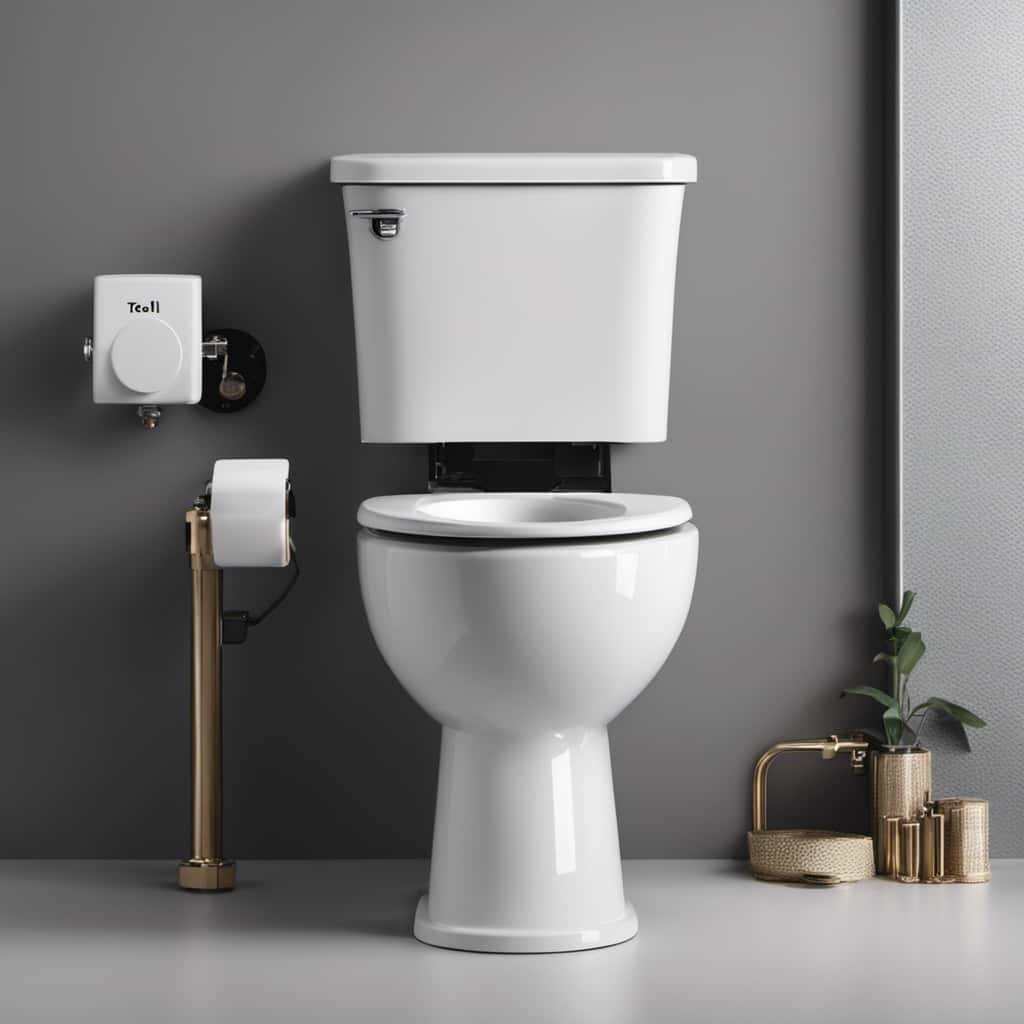
Treating the Waste: How Sewage Is Processed
How is sewage processed to treat the waste?
Sewage treatment is a crucial step in water treatment and waste management. It involves a complex process that aims to remove contaminants and harmful substances from sewage before it’s released back into the environment. Here is a brief overview of how sewage is processed:
- Primary Treatment: In this stage, large solid particles, such as debris and grit, are removed through physical processes like screening and sedimentation. The sewage is then passed through sedimentation tanks, where heavy solids settle at the bottom and are removed as sludge.
- Secondary Treatment: This stage focuses on the biological breakdown of organic matter in the sewage. The sewage is transferred to aeration tanks where aerobic bacteria break down the organic compounds. This process, called activated sludge, helps remove pollutants and reduces the biological oxygen demand (BOD) of the wastewater.
- Tertiary Treatment: Also known as advanced or final treatment, this stage further removes any remaining impurities and contaminants. Advanced techniques such as filtration, disinfection, and chemical treatments are employed to ensure the water meets the required quality standards before it’s discharged or reused.
Sewage treatment plays a vital role in protecting public health and the environment by ensuring that wastewater is properly processed and purified before it reenters the ecosystem.
Where Does the Treated Water Go
After undergoing the necessary treatment processes, where does the treated water from sewage go? The management of treated water is a critical aspect of sewage treatment facilities. Once the water has been treated, it’s typically discharged into the environment, either into land or water bodies. Treated water management is an important consideration due to the potential ecological consequences of its disposal.
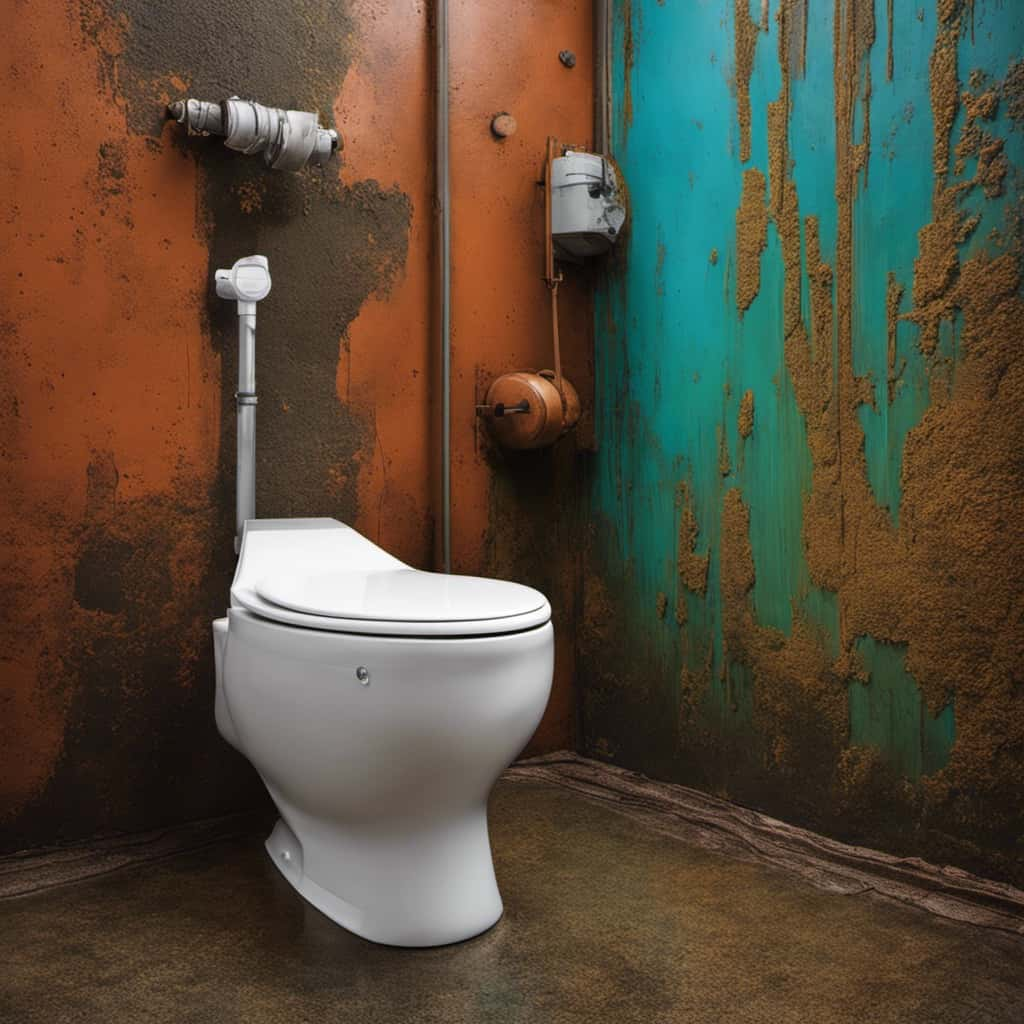
When it comes to land disposal, several methods are commonly used. One approach is to utilize the treated water for irrigation purposes, providing a sustainable solution for agricultural needs. This not only helps conserve freshwater resources but also ensures that the nutrients present in the treated water are beneficial for plant growth. Another option is to recharge the treated water into underground aquifers, replenishing groundwater sources and maintaining water availability.
On the other hand, disposing of treated water into water bodies, such as rivers or oceans, is also a common practice. This method allows for the dilution and dispersion of the treated water, minimizing any potential impacts on the receiving environment. However, careful monitoring is necessary to ensure that the discharged water meets regulatory standards and doesn’t harm aquatic ecosystems.
In the subsequent section, we’ll explore the different disposal methods in more detail, examining the advantages and disadvantages of land and sea disposal and their implications for the environment.
Land or Sea: Different Disposal Methods
Continuing the discussion on treated water management, I typically discharge the treated water into the environment, either onto land or into water bodies. The choice of disposal method depends on various factors such as local regulations, environmental impact assessments, and the availability of suitable infrastructure.
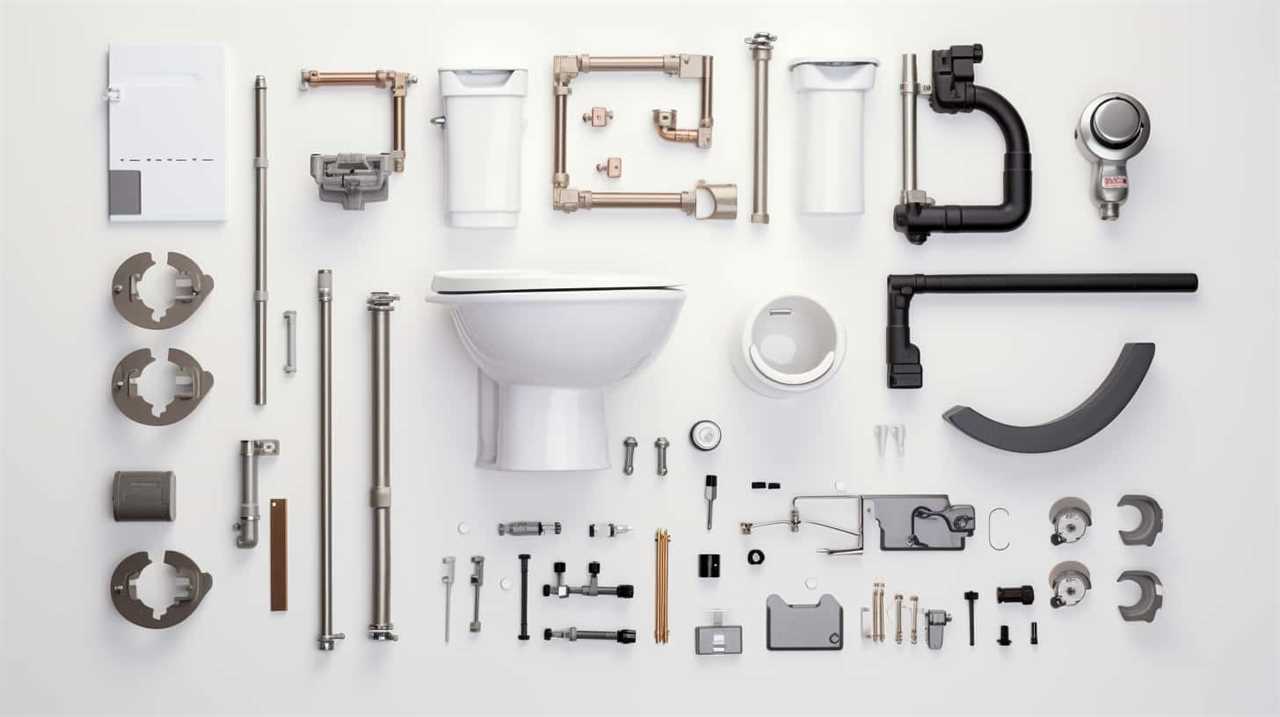
Here are the different disposal methods and their implications:
- Land Disposal: This method involves releasing the treated water onto designated land areas. It can be beneficial as the soil acts as a natural filter, removing any remaining contaminants. However, it’s crucial to ensure that the treated water is compatible with the soil type and that there’s no risk of groundwater contamination.
- Ocean Disposal: In some cases, treated water is discharged into nearby water bodies such as rivers, lakes, or oceans. While this method provides a convenient solution for water management, it can contribute to ocean pollution if not properly monitored. It’s essential to conduct regular water quality testing and adhere to strict discharge limits to minimize the environmental impact.
- Reuse and Recycle: Another option is to reuse the treated water for non-potable purposes such as irrigation, industrial processes, or toilet flushing. This approach conserves water resources and reduces the need for disposal altogether.
Considering the potential risks associated with land disposal and ocean pollution, it’s crucial to assess the environmental impact of toilet waste disposal.
The Environmental Impact of Toilet Waste Disposal
As I delve into the environmental impact of toilet waste disposal, it’s crucial to consider the ramifications of our chosen disposal methods on the ecosystem. Proper toilet waste management is essential for maintaining a sustainable sanitation system that minimizes harm to the environment.
The disposal of toilet waste can have significant environmental consequences. Improper management can lead to the contamination of water sources and the spread of diseases. When waste isn’t adequately treated, it can contain harmful pathogens, nutrients, and chemicals that can pollute rivers, lakes, and groundwater. This contamination poses risks to both human health and the ecosystem.

To mitigate these risks, sustainable sanitation practices should be implemented. This involves the proper treatment and disposal of toilet waste to minimize its impact on the environment. Various methods can be employed, such as wastewater treatment plants, composting toilets, and anaerobic digestion systems. These systems aim to remove harmful pathogens, reduce nutrient levels, and produce safe byproducts.
Frequently Asked Questions
How Often Should a Toilet Be Cleaned and Maintained?
As an expert in toilet cleaning and maintenance, I can provide valuable insights on toilet cleaning frequency and maintenance tips.
Regular cleaning is crucial to maintain a hygienic and odor-free toilet. It’s recommended to clean the toilet at least once a week, focusing on the bowl, seat, and surrounding areas.
Additionally, proper maintenance involves checking for leaks, ensuring the flushing mechanism works effectively, and using appropriate cleaning products. These practices contribute to a well-maintained and functional toilet.

Is It Safe to Flush Toilet Paper Down the Toilet?
Is it safe to flush toilet paper down the toilet?
As a master of toilet maintenance, I must warn you of the environmental impact of flushing toilet paper. While it may seem convenient, it can lead to clogged pipes and sewer backups.
It’s time we explore toilet paper alternatives, such as bidets or reusable cloth wipes. By making this small change, we can reduce our reliance on single-use products and protect our precious plumbing systems.
Can Flushing Certain Items Down the Toilet Cause Plumbing Issues?
Flushing certain items down the toilet can indeed cause plumbing issues. Items like wet wipes, feminine hygiene products, and paper towels can clog the pipes and lead to expensive repairs.
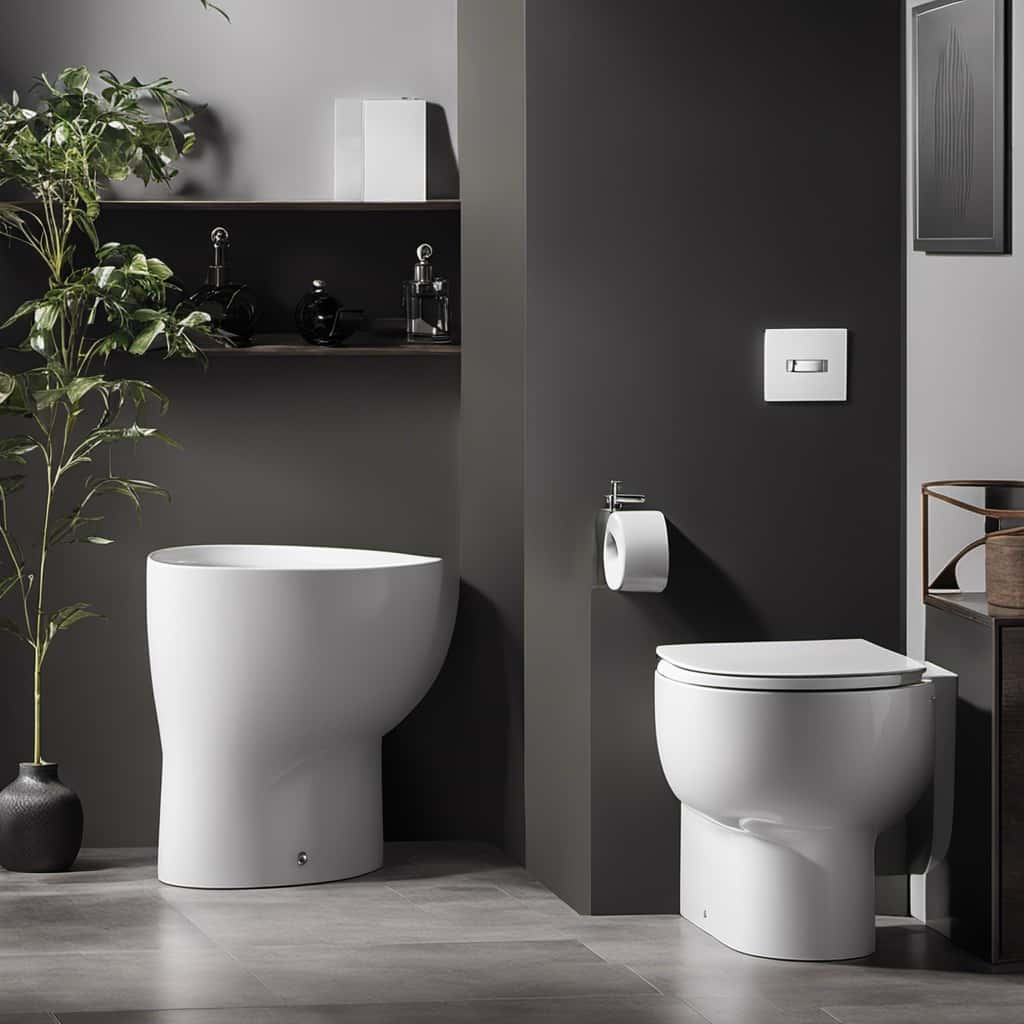
Not only does this create inconvenience, but it also has a significant environmental impact. These items don’t break down easily and can end up in our waterways, harming wildlife and ecosystems.
It’s important to only flush toilet paper and bodily waste to avoid these problems.
How Does the Toilet System Prevent Odors From Escaping?
Toilet ventilation is a crucial part of toilet odor control. The system is designed to prevent odors from escaping and causing discomfort.
By using a combination of air vents and traps, the toilet system creates a barrier that traps and contains unpleasant smells.
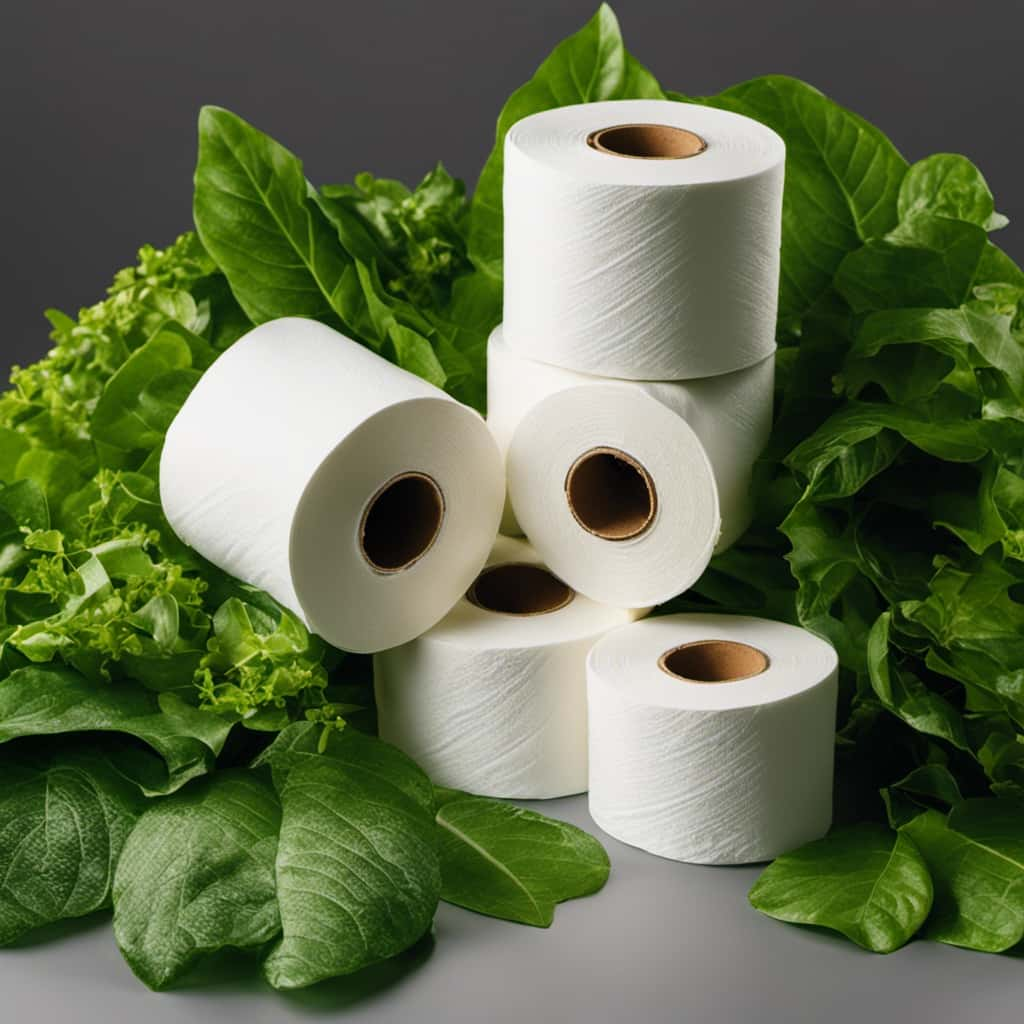
The air vents allow for the circulation of fresh air, while the traps prevent odors from flowing back into the bathroom.
This ensures a clean and odor-free environment for users.
Are There Any Regulations or Guidelines for Toilet Waste Disposal?
There are strict regulations on sewage treatment and guidelines for septic tank maintenance. These rules ensure that waste disposal is handled in a safe and efficient manner.
Compliance with these regulations is crucial for maintaining a healthy environment and preventing contamination of water sources. Proper treatment and disposal of toilet waste are essential to protect public health and prevent the spread of diseases.

Adhering to these guidelines helps ensure that our sewage systems function effectively and sustainably.
Conclusion
In conclusion, the journey of toilet waste is a fascinating and complex process. From the moment we flush, the waste travels through a network of sewer pipes, undergoing treatment at sewage treatment plants before being disposed of.
Whether it ends up on land or in the sea, the environmental impact of toilet waste disposal can’t be ignored. Understanding the intricate system behind toilet drainage highlights the importance of responsible waste management for the health of our ecosystems.

